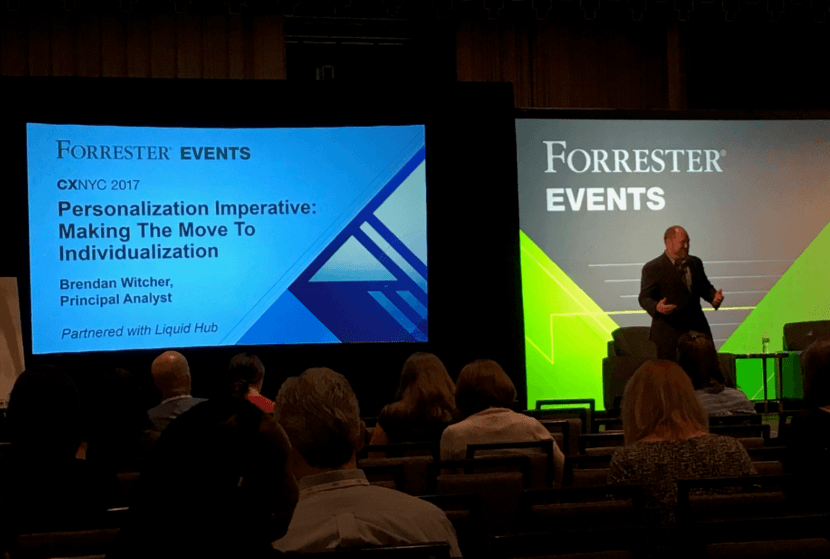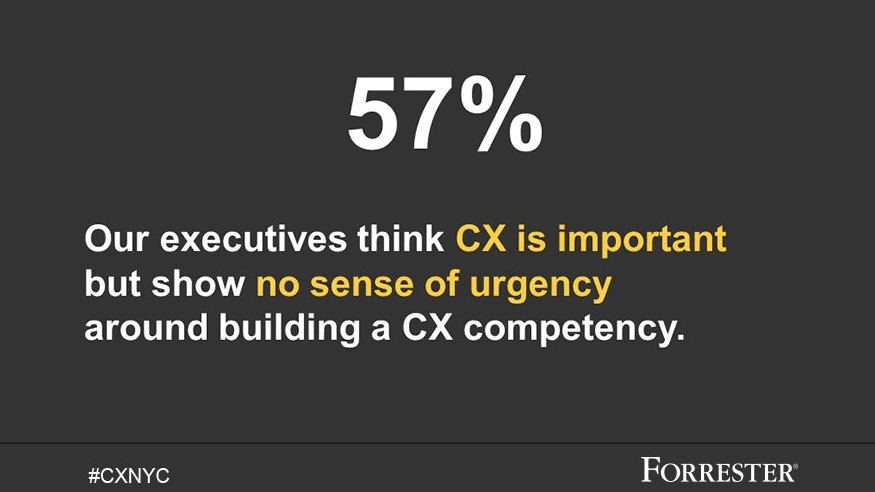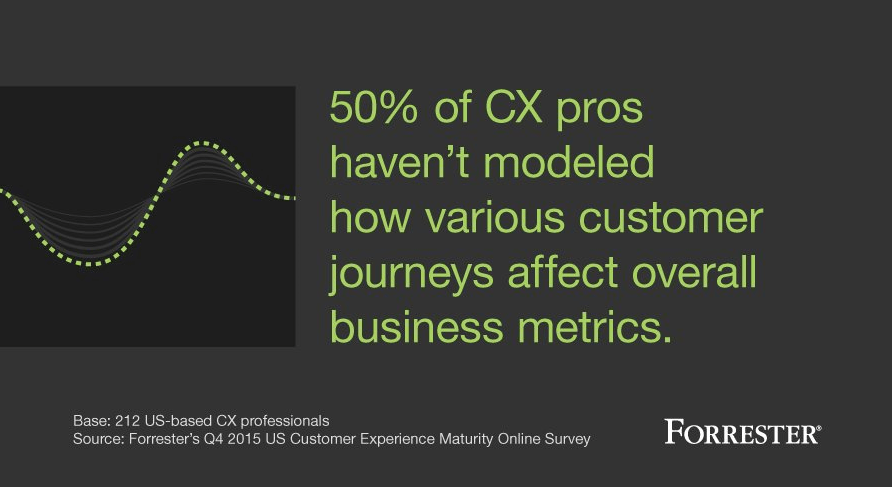Following up from my day 1 post about the Forrester Customer Experience (CX) Conference held in New York City this week, I wanted to provide a recap of the main conference days and lessons learned.
For details about this conference, you can read more
here.

This conference was centered around the topic of Customer Experience and there were incredible sessions from Forrester analysts and companies such as Wayfair, Carnival Cruise Lines, Blue Cross/Shield of California, Verizon, and more.
In today’s ever-changing world of interactions through digital devices, in-store, or just out and about, CX professionals are expected to deliver the experience that their customers desire and impress them with an experience that goes beyond their expectations while also ensuring they are driving ROI and improving the bottom line. This conference had the perfect tagline, “Designing Breakaway Customer Experiences”. There were great sessions surrounding CX experiences to consider, how to map the experiences into journeys, how to measure for success, tools to implement, execution of CX, and analysis for measuring results.
There were so many sessions with great content that I had to resort to the session presentations to gather as much information as I could, because I couldn’t be in multiple sessions at the same time. With the amount of information and lessons learned personally, I would love to write about all of them, however that would take much longer than you want to spend reading a blog post! With your time in mind, the rest of this post is going to cover two specific lessons I learned.
Lesson 1: Planning the right experience
To quote my favorite TV show character Hannibal Smith from the “A-Team”, “I love it when a plan comes together.” Planning is the most important step of the CX efforts by a business. There were several sessions where the planning portion was discussed, along the steps to building everything out.
Planning is especially critical in the areas of significance due to the data that we already know about customers:
“82% of customers stopped doing business with a company in 2016 after a bad experience compared to 76% in 2014.”
– 10 Big Takeaways From Mary Meeker’s Internet Report, Fortune Tech, May 31, 2017.
With this increase, it is even more important that your planning period utilizes data, not just your gut. There are several different ways to go through planning and collecting the data about your customers and their experience with your business. Depending on what is needed, portions of the data could be collected automatically with interactions of digital channels, or through the use of efforts with qualified collection through feedback polls, surveys, etc. Find the best way and don’t just collect once, plan a collection of CX satisfaction and success multiple times a year. Different methods may require different timeframes in between collection. Some are daily, weekly, monthly while others might be quarterly or yearly. You can also have dynamic timings with knowledge of integrated systems, where we connect the last time someone entered a store, used an app, logged in, purchased something online etc. when we ask them for a quick feedback or survey.
Personally, a lot of the big brands fail at this with their implementation of website survey asks. Every time I go to some sites they ask if they can survey me. It doesn’t trigger based on my actual experience with the brand.
Mapping the different types of experiences and channels needs upfront planning to ensure that when you execute, you are doing so with the best plan of customer desired experience possible.
Lesson 2: Measuring Real Business Impact

One of the best topics covered in multiple sessions was how to measure the ROI of the CX efforts. The first point was that the measurement of real business impact isn’t always about customer analytics or revenue. There are so many different data points that should be considered for what to measure for assessing if you have created a real business impact outside of those common metrics.
Analytics and Big Data have been buzzwords for years, but a term that I prefer is Dark Data. This is all the data that is collected but never utilized. It sits in the dark, waiting to be used. A true measurement strategy and understanding what data points need to be collected, and where and how it will be utilized - alone or combined with other data - all need to be planned out and understood by the internal teams, especially executive team. From this data, detailed aggregation and potential algorithms are used for calculations that create quick view dashboards. This is most important step to complete with your measurement strategy. This allows for a quick analysis of the current state of specific experiences, and business impact overall.
With each CX map that is visualized, there should also be a focus on improving specific maps that make the best results of change in business impact for your organization. This would include the continuation of improving moments of truth in a journey that are positive and providing a successful experience for a customer. We want to ensure that these are maintained and continue to be optimized and, once optimized, continue to measure their success.
Along with the positive, though, are the negative CX journeys that need to be measured and addressed as well. As a reminder, the stat quoted at the beginning of this post said that in just 2 years, the amount of people who wouldn’t continue with a business after a negative experience has increased by 6%. By continuously measuring the emotional arc of the journeys, a business can monitor if a specific stage of the journey is staying neutral, positive or negative. This allows the organization to focus on the most impactful stage based on negative experiences. By working on improving these negative CX’s you should be able to measure that the efforts are reducing the negative scores and making a real business impact.

Wrapping It Up
I could continue writing more about lessons learned, but I am already pushing the limit on the amount of time someone wants to spend reading one single blog post. The Forrester CXNYC conference was an incredible 3 days of constant learning. While the topics are in the articles, videos, blogs, and books that I read on a regular basis, having this immersion experience resonates even more and gets the excitement (drinking the Kool-Aid) flowing.
I would highly recommend this conference to CX professionals, as there are so many different tracks and information across all aspects of CX in an organization.
Thanks Forrester for a wonderful event, and I am looking forward to continued CX information from your analysts.
